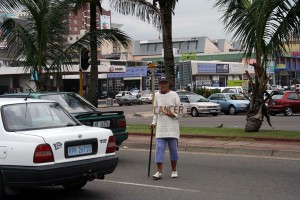GHANAIAN schoolgirl Regina Addae was born with a malignant tumor. By age 13, it had grown to the size of a rugby ball. It covered more than half of her face, and if left untreated, it would kill her. Unlike many other Ghanean cancer patients, however, Regina ran into some very good luck. In 2004, British nurse Kirstie Randal met Regina while aboard a medical ship on the coast of Ghana, and vowed to help her. Six years and £30,000 later, Regina was able to travel to London for treatment. On November 5th 2010, a BBC team accompanied Regina as she underwent twelve hours of risky surgery at the London Hospital in Whitechapel. The operation was successful – insofar as it saved her life.
Yet media coverage of Regina’s journey failed to highlight not only why Regina remained untreated for so long, but also why her illness is part of a larger trend. Once known as the disease of the rich, cancer is becoming alarmingly prevalent in the developing world. According to the World Health Organisation (WHO), nearly eight million people died from cancer in 2010. More than two thirds of these deaths occurred in the developing world. While the number of cancer deaths in wealthy countries, at 2.4 million annually, is expected to remain fairly stable, low and middle income countries are facing an increase in mortality from 6.4 million in 2010 to a projected 9.5 million in 2030. As a result, WHO estimates that by 2020, cancer will kill more people in developing countries than HIV/AIDS, tuberculosis and malaria combined. A glance at Regina’s home country, Ghana, reveals three underlying causes of this development.
First, several key risk factors are on the rise. According to the Ghana Health Services, fewer than 10% of Ghaneans eat an adequate amount of fruit and vegetables. Between 1993 and 2009, the percentage of overweight and obese Ghanaian women increased from 13% to 30% as a result of increased physical inactivity. Finally, because many high-income countries have banned tobacco advertising, cigarette companies are increasingly targeting the African continent. According to the United Nations Food and Agricultural Organisation, smoking in Africa is increasing by a record 3.5% per year. Data from the American Cancer Society suggest that in combination, these factors are estimated to cause 63% of cancers.
Second, Ghana lacks the resources to meet the high costs of managing the resulting increase in the number of cancer patients. According to the International Atomic Energy Agency (IAEA), more than half of the men and women diagnosed with cancer need radiotherapy at some point during their treatment. Given the hefty cost of a single radiotherapy unit (£2.5 million), Ghana has only two radiotherapy cancer treatment centres. They serve not only as central treatment centres for Ghana, but also for its neighbors, Burkina Faso and Cote d’Ivoire, leaving supply for treatment much lower than demand. In addition, poor working conditions, few prospects for career development, and the expense of training mean that approximately 3000 cancer care workers required to staff Ghana’s treatment centres. Prevalent misconceptions do not help the situation. Miriam Owusu, an oncology nurse at Sekyere of Komfo Anokye Teaching Hospital, recalls that some people tried to dissuade her from this career because they believe that proximity to radiotherapy may result in cancer or infertility later in life. “I was discouraged and frightened,” she says.
Third, most patients simply report their cases too late for treatment to be effective. For example, only 25% of patients with breast cancer at Korle-Bu teaching hospital survived beyond five years after diagnosis because those patients waited an average of ten months with their symptoms before coming to the hospital. That figure is the result of widespread ignorance about the symptoms of breast cancer, as well as the community’s perception that surgery actually hastens the onset of the disease. This, in turn, discourages more women from seeking treatment.
Yet there are some reasons for hope. Unlike HIV/AIDS, cancer is curable in 30% of cases identified, according to WHO. In addition, low-income coun- tries are increasingly aware of the scale of the challenge and, with the help of the international community, taking measures to meet it. In 2004, the IAEA, best-known as the UN’s nuclear watchdog, established a Programme of Action for Cancer Therapy. The program conducted a mission in Ghana to help assess its cancer burden, and it subsequently assisted the government in securing loans worth £8 million to help meet the needs identified. In May 2010, Ghana hosted the kick-off meeting for the organisation’s most recent project: a Virtual University for Cancer Control designed to provide low-cost, long-distance learning for health care workers in participating countries. It is an innovative first step for treating Ghanean cancer patients domestically, so that being cured of cancer does not (as it did for Regina) depend on blind luck.




